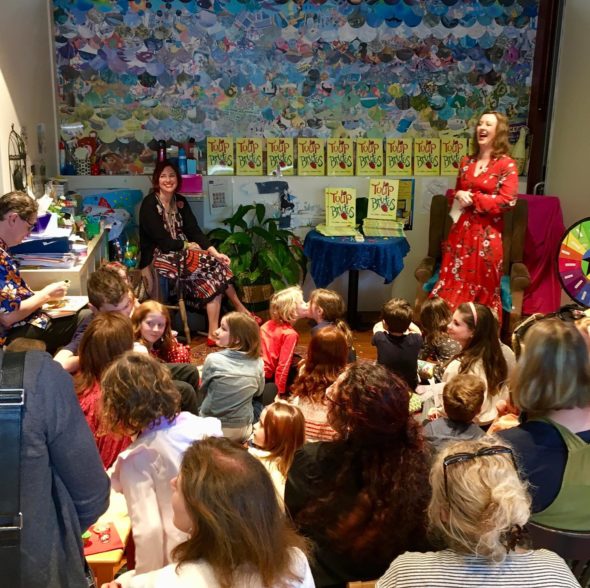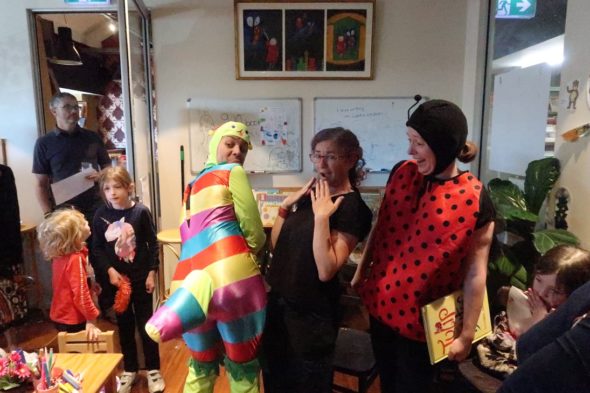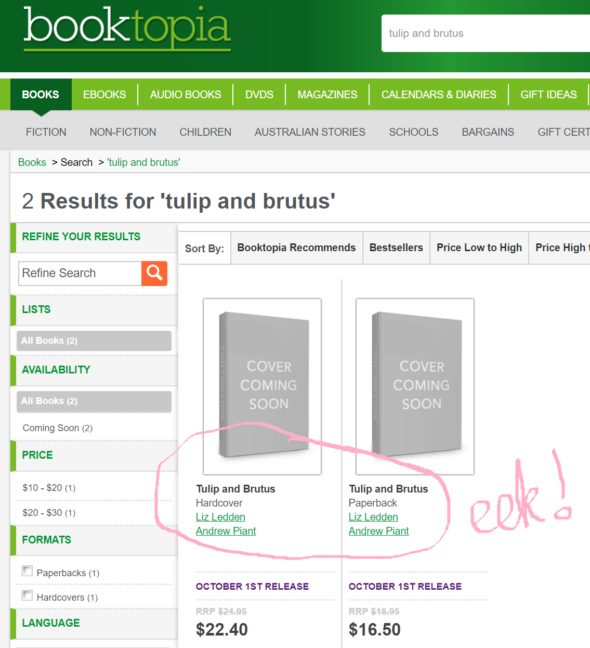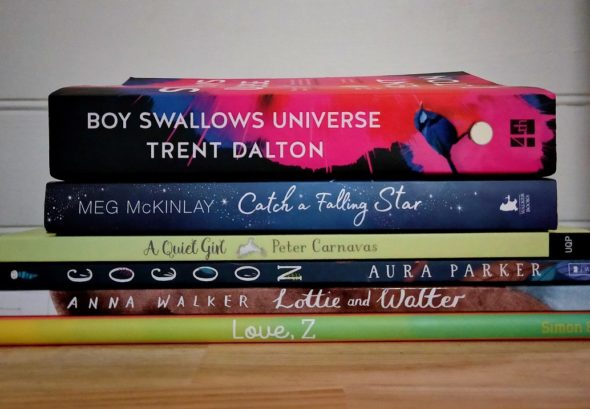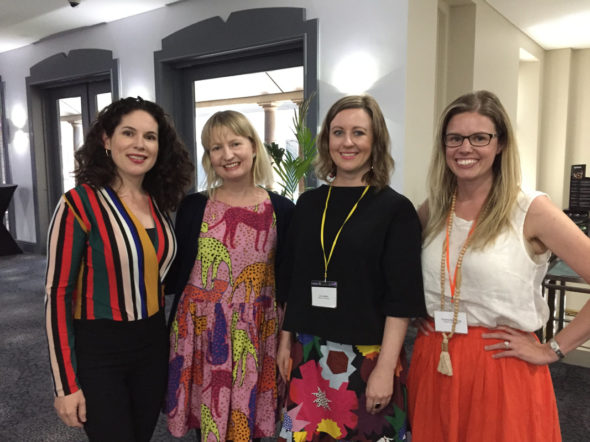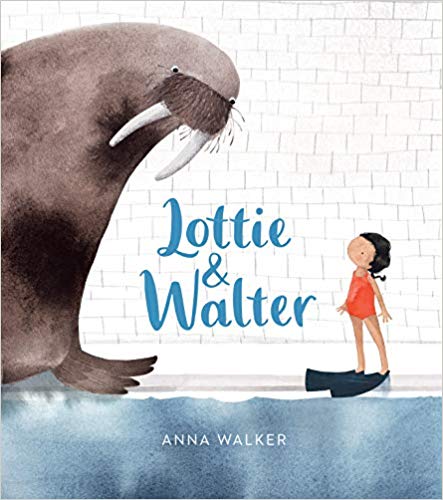
Could there be a more idyllic front yard?!
Writing retreats: super productive, accelerated write-athons, or an excuse to get together with friends and be a bad caffeine-fuelled cliche full of cheese, wine and chats? Um, is it okay if it’s a bit of both? Because that’s pretty much what my recent weekend away with four writing friends was all about. And as far as I’m concerned, it was a success! Here are the ins and outs of our three-day stay in beachside Patonga, which might be useful if you’re thinking of holding your own DIY writing retreat.
What worked best:
– Rules schmoolz – we kept the structure of the weekend very loose, which allowed for random bursts of writing, workshopping each others’ ideas, brainstorming difficult plot points and critiquing each other’s work whenever, interspersed with beach walks, chats and endless tea. It was a great mixture of work and fun, and something with a more rigid timetable just wouldn’t have had the same vibe. I think this comes down to personality though, and the way you work best. It also meant we wrote and edited when ideas struck rather than because we were meant to.
– Word sprints – You may have seen #500in30 floating around on social media – it was basically just like that. This was where we started a timer for 30 minutes and wrote non-stop, with the aim of reaching at least 500 words. While of course you can complete these in your own time and space, doing them together felt even more productive. Something about being accountable and not wandering off to the fridge or kettle, perhaps. We did these towards the end of our stay which worked well, as it put all the ideas generated through brainstorming and workshopping onto paper. And speaking of – some people typed while others literally used pen and paper. Whatever works for you!
– Critique swaps – at random times throughout the weekend we’d break off into twos for a critique swap, whether it be a picture book manuscript or a chapter or two. Without printers on hand, we did this by basically swapping laptops and just marking up comments on the document.
What didn’t:
– Not enough ‘stuff’ – It’s hard to find fault with such a great weekend (thanks guys!) but if thinking about it from a ‘next time’ point of view, maybe staying somewhere with more ‘stuff’ would be fun, albeit distracting. We went to a café a few times, but had to drive to the next town over (Pearl Beach), so staying somewhere with a few cafes and shops to explore in periods of down time (let’s call it ‘thinking time’) would be fun. And somewhere to go for dinner would be good, too. The one place to eat out in Patonga (a waterfront pub) was closed for renovations, so we mostly ate food we brought with us (chocolate is a meal, right?), and one night picked up Thai from a couple of suburbs away.
Things to look for in a rental property:
We rented a house via Airbnb, and while it wasn’t the cheapest house around, it felt like the perfect pick. We wanted a place that was within 1-2 hours drive for all of us, coming from various parts of Sydney and surrounds. Patonga on the lower Central Coast fitted the bill; alternatives could be the Southern Highlands or the Blue Mountains.

Hamptons-ish, no?
Space
We were fortunate enough to stay in a fantastic four-bedroom, two-bathroom house spread over two levels, so there was plenty of space for everyone. Despite two people having to share one room, it never felt too crowded. Most of our time was spent in the open plan dining/lounge room and there was lots of space to spread out – two big couches, a dining table and a smaller table with chairs, so everyone had their own writing spot. There was another dining set on the outdoor deck which would have been great in warmer weather. A smaller living area wouldn’t have worked quite as well, so I’d definitely prioritise a spacious communal area over big bedrooms.
Features
Conveniences like WiFi, a dishwasher and heating throughout the house also made the stay a comfortable one, with the kitchen situation great for the gazillions of coffee cups used over the weekend. Without a dishwasher it would have been a whole lot more annoying, with domestic chores taking away from writing time. Another plus was having linen included, so everyone didn’t have to lug their own sheets and towels there and back.
Location
A place on a busy road wouldn’t have been anywhere near as relaxing as our quiet street in a relatively isolated village. Think about the noise factor when picking a place – it’s a writing retreat after all, and the sound of lapping waves is more conducive to thinking time than party noise and traffic. Although as mentioned above, it can be worth considering if you want to be near village shops for cafes, food and other distractions. Or not!
Too budget-blowing? Try these:
A DIY writing retreat certainly doesn’t have to involve forking out for a fancy beach house, as fun and indulgent as that can be. It doesn’t have to cost much, or even anything at all. Other alternatives are:
– A day (or stay) at a writing friend’s house – preferably one with a big communal space, whether it be a lounge room, back deck or yard, with plenty of spots to sit.
– A few hours at a café – especially one with a communal table and nice staff who don’t seem annoyed you’ve outstayed your welcome (you should totally be on your fifth flat white by now …).
– A room at your local writers’ centre – if you’re a member of a writer’s centre, check their room rental policy. Many allow members to use their rooms free of charge.
– A day out and about – if you’re looking for story ideas or writing prompts, you could meet at an art gallery, museum, market or fun park (SCBWI sometimes runs sessions like these called Scribble and Sketch). Wander around and stop to observe for a while, and use your senses to generate scenes, or people watch for character ideas. Public transport journeys alone can be great for this. The possibilities are endless!



